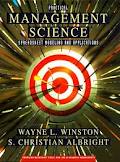Unit-1
1) What is the
concept of Management, Explain its Nature, Scope and
importance to the organisation
importance to the organisation
2) What is
Management, Explain the functions of Management
3) Explain the
Principles of Management or describe the 14 principles of
Management as outlined by Henry Fayol
Management as outlined by Henry Fayol
4) Explain the
evolution of Management
Unit-2
1) Explain the
principles of a sound organisation
2) What is an
organisation, Explain its levels and types
3) What do you
mean by Departmentization, evaluate any three methods of Departmentization
Unit-3
1) What is
Plant location, explain factors affecting plant location
2) Define
productivity and production, explain how productivity can be enhanced in the
Indian industries
3) Explain the
concept of SQC, explain how you can construct control charts for the variables
PROBLEMS:
ü Mean charts
ü Range
charts
ü P-charts
ü np-charts
ü C-charts
Note: Required Table value for the calculation of Mean and
Range problems
Unit-4
1) What is
Inventory, explain the methods of pricing while issuing of
Materila(FIFO,LIFO,HIFO,Weighted average and Simple average)
2) What is
Marketing, Explain the functions of Marketing
3) What is
PLC, explain various stages in PLC with diagram
PROBLEMS:
ü FIFO, LIFO,
Weighted Avg., and Simple Avg.
ü EOQ, ABC
problems
Unit-5
1) What is
HRM, Explain the differences between personnel management & industrial
relation and HRM
2) Explain the
Functions of HR or personnel Manager
3) What is job
evaluation, explain its advantages and methods of job evaluation
Unit-6
1) What is
Network analysis, explain the difference between PERT and CPM
2) What is
Project Management, explain the nature of cost and time in project
PROBLEMS
ü CPM
ü PERT
Note: Table
value is required in PERT problems when estimated time is given
Unit-7
1) What is
corporate planning, explain the characteristics of Mission statement
2) Explain the
major elements under corporate planning
3) What is
environmental scanning, explain the importance of environmental scanning to the
organisation
4) What is
SWOT analysis, explain the significance of swot analysis
5) How the
Mission statement is different from the vision
Unit-8
1) What is
J-I-T, Explain the importance of JIT in present scenario(Have to write one case
study)
2) Explain how
products are developed in TQM environment
3) Explain the
importance of Six sigma
4) Explain the
importance of supply chain management process
Note: one case
study should write the above contemporary management techniques
I wish you all the best



